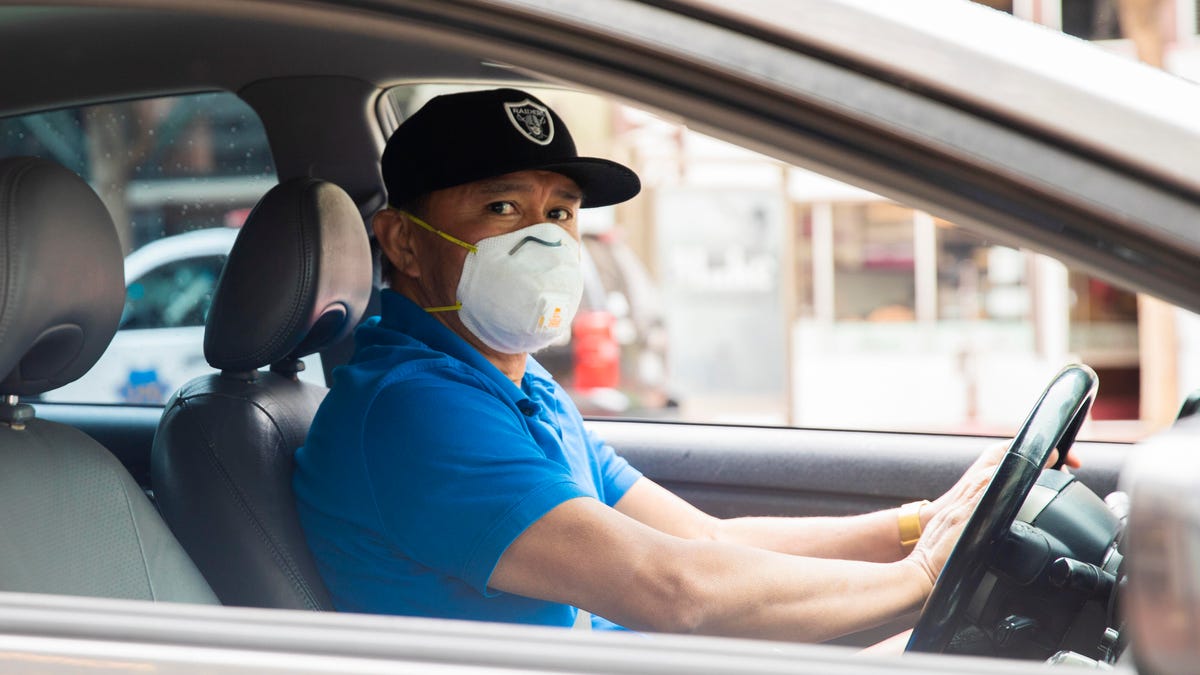Uber may now require passengers to take a mask selfie before rides
First drivers, now riders need to prove they're using face coverings to protect against the spread of coronavirus.

All Uber drivers and passengers must wear a mask while using the ride-hailing service.
Uber has been requiring all passengers to wear a mask during rides since early May, but now they may need to prove it. The ride-hailing company announced Tuesday that it's rolling out in-app technology that will have riders sometimes take a selfie with their face coverings on.
The goal of the new feature is to help fight the spread of the novel coronavirus, which has now infected more than 25 million people and killed nearly 850,000 worldwide. Uber first introduced the mask selfie technology in May when it began requiring drivers and delivery people to take a photo with their mask on before starting work each day.
Uber's new technology has riders take a selfie with their face mask.
"We firmly believe that accountability is a two-way street," Sachin Kansal, Uber's global head of safety product, wrote in a blog post on Tuesday. "That's why we're expanding the same technology to riders, too."
Passengers won't have to take a selfie before each ride, however. The way it works is if a driver reports a rider for not wearing a mask, that rider will be required to take a selfie with their face covered before their next ride with Uber. If they're not wearing a mask then, they won't be able to take the ride.
Uber drivers say they've experienced a difficult time during the pandemic. Many have reported coming down with COVID-19, the disease caused by the coronavirus, and at least six are known to have died from the illness. The US Centers for Disease Control and Prevention has recommended that people avoid sitting in confined spaces with strangers, such as a car, to lower the risk of infection.
Over the past several months, Uber has worked to make rides safer. In May, it rebuilt its app to make sure drivers and riders adhere to coronavirus safety guidelines. For example, before each trip, drivers and passengers have to agree to a Go Online Checklist of items, including wearing a face covering, keeping windows rolled down when possible and have no one sitting in the front seat. Drivers and riders can additionally cancel a trip without penalty if the other person isn't wearing a mask when they meet up.
Lyft also began requiring in May that people wear masks during rides as part of its personal health certification program. Under this program, every rider and driver must self-certify that they'll wear face masks throughout the ride and have no symptoms of COVID-19. Other mandates in Lyft's program include keeping vehicles clean, sanitizing hands frequently and no passengers in the front seat.
With its mask verification technology, Uber said more than 3.5 million drivers and delivery people have completed more than 100 million verifications since the company launched the feature just over three months ago. Uber added that the technology is designed to detect the mask as an object in the photo and doesn't process biometric information on individuals.
Uber said its mask verification feature for passengers will roll out to the US and Canada by the end of September and then to Latin America and other countries in the following weeks.

